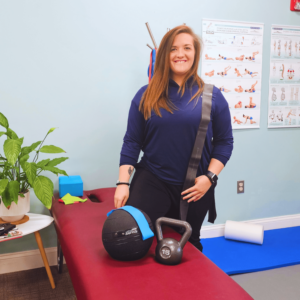The diagnosis of fibromyalgia is often a complicated and disheartening one. The word literally translated means “Muscle Pain”. In my experience, the diagnosis is used as a catch-all for generalized pain, and patients are often led to believe that there is no “real” cause, and no real solution beyond drug based pain management. This is not true.
The fact is that there are many physical, chemical, and emotional symptoms associated with a fibromyalgia diagnosis, and the triggers/causes can be just as varied. That there is no real scientific consensus regarding the actual diagnosis and treatment only makes the problem more complicated. Because there are many possible causes – often ones that can create their own vicious cycles – it can take some time and investigation to figure out where to start. Therefore, working with professionals who take time to learn your history and understand what factors have affected your health over time can reveal important clues about how to help you get better.
Physical injuries
Physical traumas, especially those that aren’t properly evaluated, treated, or rehabilitated can develop into chronic pain syndromes. Sometimes it’s a single injury or episode, but can also be due to accumulated or repetitive stress and compensations for multiple injuries. Examples include:
- Accidents
- Surgeries
- Whiplash
- Concussion/traumatic brain injury
Chemical Causes
Chronic inflammation can cause many of the physical, mental, and emotional symptoms associated with fibromyalgia. Common ones can include
- Gut inflammation/”Leaky Gut”
- Food allergies or sensitivities
- Mold or fungus exposure
- Chronic infections (like Lyme or Epstein Barr)
- Drug and chemical exposures
Emotional and Mental Stress
There is a strong correlation between mental and emotional stress triggers and the development of chronic pain syndromes like fibromyalgia. Unfortunately, this is where the “It’s all in your head” dismissal by some medical professionals comes from.
More current and extensive research is showing that this kind of stress does in fact cause physical effects that lead to lower stress tolerance threshold and heightened stress response. This can lead to issues like
- Chronic inflammation
- Decreased healing ability
- Anxiety and Depression
- Digestive problems
- Insomnia
The physical, chemical, and emotional factors are, in fact, all related, and it can be difficult to sort them out. However, there are basic things that we do in our office to start the process.
Spinal adjustments and soft tissue work can gently restore mobility and down-regulate the pain and stress response
Movement is essential for treating chronic pain. Pain leads people to avoid moving, because it hurts! The less you move, the more it hurts when you do…again, a vicious cycle that needs to be broken. By helping you understand how your body works (or doesn’t) and finding ways to safely get you moving, we can start making positive changes. Often we start with simple breathing exercise and yoga based movements, until your body and brain start to re-learn that “movement feels good!”
Frequency Specific Microcurrent can help decrease pain and inflammation, especially the kind associated with old or chronic injuries
Near-Infrared Red (NIR) light therapy can help with inflammation, tissue healing, and relaxation
Nutritional Support — if it appears that GI problems are part of the problem, we will often work with trusted nutritionists and naturopaths that have detailed understanding of food sensitivities and gut healing.
Emotional/Mental Support – when this is a predominant issue that seems to be exacerbating your symptoms or or hindering your healing, we are happy to work with and refer to mental health professionals who understand and address the complex links between your mental and physical health
There is always something that can be done…we are here to help you figure out practical and useful ways to move better, heal better, and feel better.





